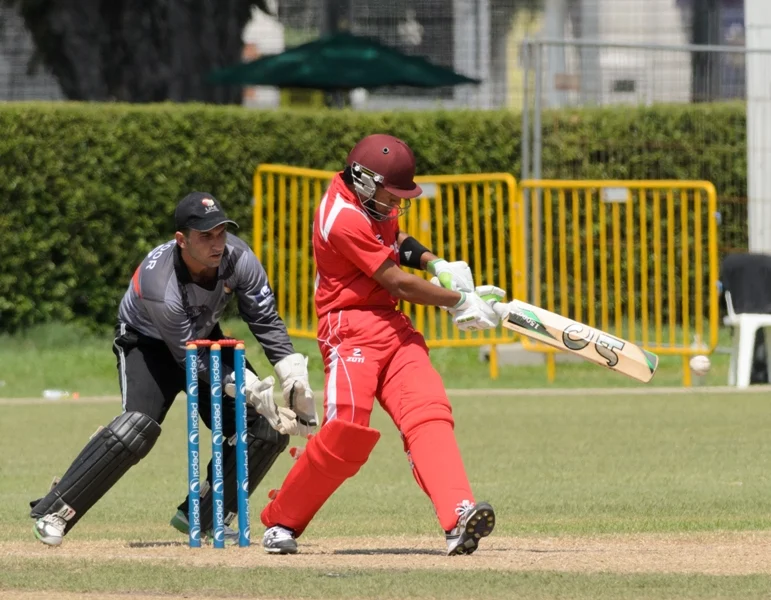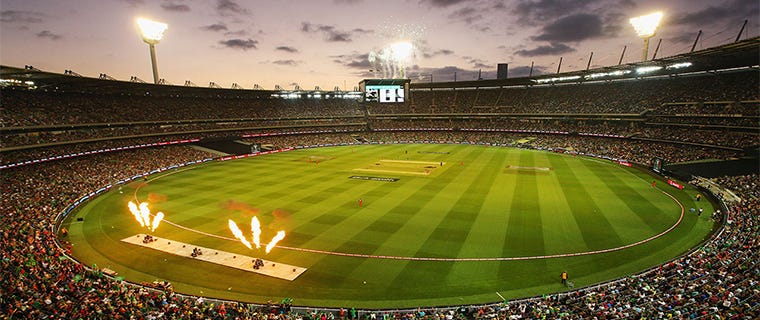
Cricket is one of the world’s most popular sports, especially in countries like India, England, Australia, and South Africa. While it may seem complex at first glance, cricket is a thrilling and strategic game once you understand the basics. In this article, we’ll break down the core rules, explain the major formats—Test, ODI, and T20—and help you understand key elements like overs, wickets, and scoring.
1. The Basics of Cricket
At its core, cricket is a bat-and-ball game played between two teams of 11 players each. One team bats while the other bowls and fields. The aim of the batting team is to score runs, while the bowling team tries to restrict runs and dismiss batters (get them “out”).
The Playing Area
- A circular or oval field, with a 22-yard pitch in the center.
- Two wickets (sets of three stumps) are placed at either end of the pitch.
Key Roles
- Batters: Try to score runs by hitting the ball.
- Bowlers: Deliver the ball to try to dismiss the batter.
- Fielders: Assist in catching, stopping runs, and run-outs.
2. Formats of the Game
Cricket is played in three main international formats, each with unique characteristics:
Test Cricket (Traditional & Strategic)
- Duration: Up to 5 days
- Overs: Unlimited
- Innings: Each team bats twice
- Scoring: Based on total runs across two innings
- Specialty: Tests patience, technique, and endurance
One Day Internationals (ODIs)
- Duration: Around 7–8 hours
- Overs per side: 50 overs
- Innings: Each team bats once
- Scoring: Team with the most runs wins
- Highlight: Popular for international tournaments like the Cricket World Cup
Twenty20 (T20)
- Duration: Around 3 hours
- Overs per side: 20 overs
- Innings: Each team bats once
- Scoring: Fast-paced and high-scoring
- Highlight: Popularized by leagues like the IPL (Indian Premier League)
3. Understanding Overs
An over consists of six legal deliveries (balls) bowled by one bowler. After each over, a new bowler delivers from the opposite end. Overs are used to structure the game and manage how long a team can bat.
4. What Is a Wicket?
The term “wicket” can mean several things depending on context:
- The three stumps topped with two bails at each end of the pitch.
- A batter’s dismissal (“He lost his wicket”).
- The pitch itself (“A good batting wicket”).
There are 10 ways a batter can be out. Some common dismissals include:
- Bowled: Ball hits the stumps.
- Caught: Ball is caught before touching the ground.
- LBW (Leg Before Wicket): Batter is hit on the pads in front of the stumps.
- Run Out: Batter is out before reaching the crease while running between wickets.
5. How Runs Are Scored
Runs are the currency of cricket. Teams aim to score as many runs as possible.
Ways to Score Runs:
- Running Between Wickets: After hitting the ball, batters can run to the opposite end. One successful run equals 1 run.
- Boundaries:
- Ball hits the ground and crosses the boundary = 4 runs
- Ball clears the boundary without touching the ground = 6 runs
- Extras:
- Wides, no-balls, byes, and leg byes give additional runs without the batter hitting the ball.
Final Thoughts
Cricket might seem complex at first, but once you understand the formats, scoring, and key rules, it becomes a fascinating sport filled with strategy, skill, and passion. Whether you’re watching a five-day Test match or a thrilling T20 showdown, the essence of cricket remains the same—a beautiful battle between bat and ball.






